Common Home Damage Scenarios

Home damage can strike unexpectedly, leaving homeowners grappling with the aftermath. At New York Total Damage Restoration (NYTDR), we believe that being informed is the first step to preparedness. In this blog post, we’ll shed light on common home damage scenarios, exploring the nuanced restoration processes and insurance claim considerations associated with each. 1. Water Woes: Water leaks and flooding are among the most prevalent home damage issues. Whether it’s a burst pipe, a faulty appliance, or severe weather-related flooding, the impact can be extensive. We’ll delve into the immediate steps homeowners should take, the importance of swift water extraction, and how comprehensive drying techniques are crucial to prevent long-term structural damage. 2. Ravages of Fire: Fire damage can be devastating, leaving homes in disarray. From assessing the extent of the damage to addressing smoke residue and structural concerns, NYTDR will guide homeowners through the complexities of fire damage restoration. We’ll also discuss the emotional toll of such incidents and the importance of a compassionate and professional restoration approach. 3. Nature’s Fury – Natural Disasters: New York City is not immune to the forces of nature. Whether it’s a hurricane, earthquake, or severe storms, natural disasters can wreak havoc on homes. Explore how NYTDR is equipped to handle the aftermath of such events, emphasizing the urgency of a rapid response and the comprehensive restoration measures needed to bring homes back to their pre-disaster state. 4. Mold Menace: Often a consequence of water damage, mold poses its own set of challenges. We’ll delve into the health risks associated with mold, the importance of thorough mold remediation, and how NYTDR employs advanced techniques to eradicate mold and prevent its recurrence. 5. Storm Surge and Wind Damage: Severe weather events can lead to storm surges and wind damage, particularly in coastal areas. Explore how NYTDR assesses structural damage, addresses water ingress issues, and undertakes necessary repairs to restore homes battered by the elements. 6. Insurance Claims Navigation: Each type of home damage scenario requires a tailored approach to insurance claims. Our blog will provide insights into the documentation needed for different scenarios, communication tips with insurance providers, and how NYTDR collaborates with homeowners to ensure a smooth and transparent claims process. At NYTDR, as experienced water damage company in NYC, we understand that no two home damage scenarios are alike. By providing homeowners with knowledge about the intricacies of restoration following water leaks, fire damage, natural disasters, and more, we aim to empower them to make informed decisions in times of crisis. Stay tuned for our upcoming posts as we continue to unravel the complexities of home restoration, offering a beacon of guidance for homeowners in their time of need.
NYC Renovation Essentials: Asbestos and Lead Removal
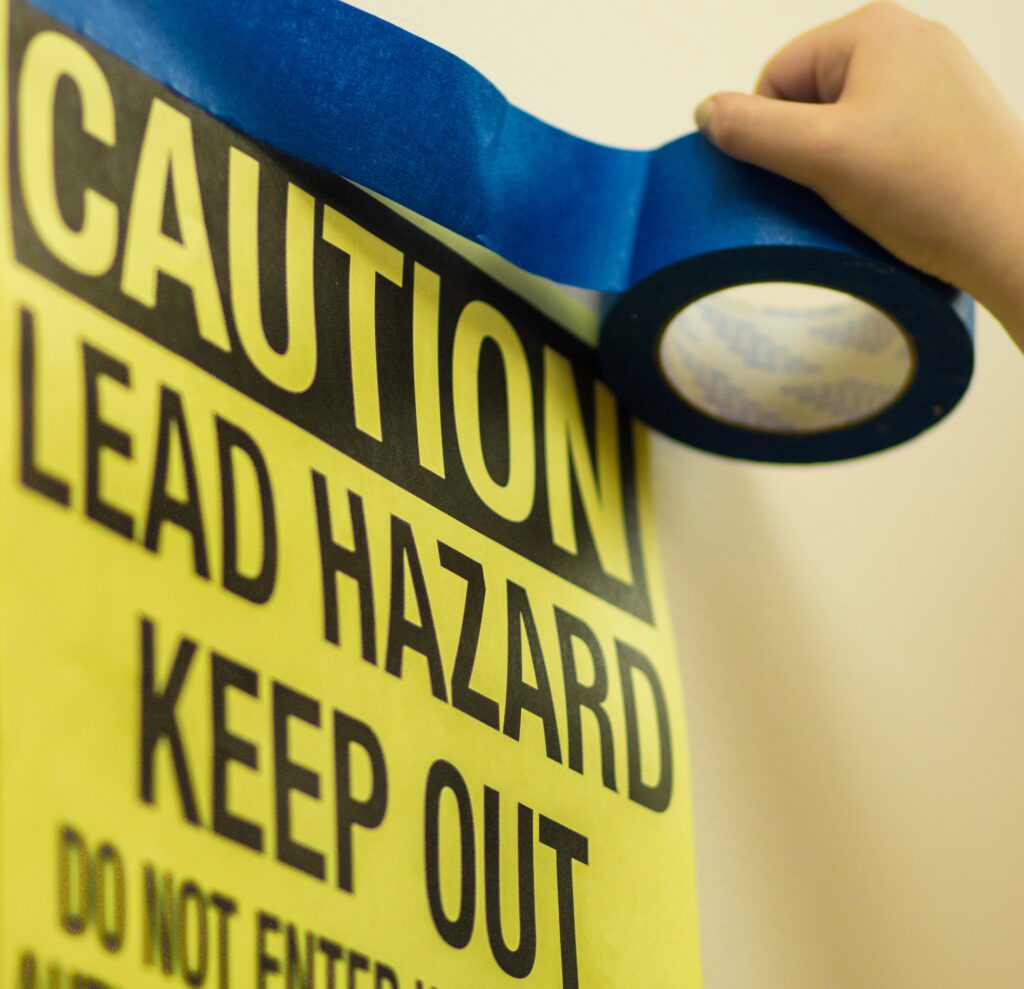
Renovating a property in the vibrant city of New York is an exciting prospect. However, it’s essential to be aware of potential hazards, particularly asbestos and lead, which can lurk in older buildings. At NYTDR (New York Total Damage Restoration), we offer comprehensive services to address these concerns during your renovation, serving as your trusted partner for asbestos and lead removal, insurance representation, and even as your contractor and designer. Understanding the Risks: Asbestos and Lead Asbestos: Asbestos is a naturally occurring mineral that was widely used in construction materials for its fire resistance and durability. However, it poses severe health risks when its fibers become airborne and are inhaled. These risks include lung cancer, mesothelioma, and other respiratory conditions. Asbestos was commonly used in buildings constructed before the 1980s, making it a concern during renovations. Lead: Lead-based paint was commonly used in homes and buildings until 1978, when its health hazards became widely recognized. Lead exposure, especially for children, can lead to developmental issues, learning disabilities, and other health problems. Renovating properties with lead-based paint can release toxic lead dust and chips into the environment, making lead safety measures essential. When to Address Asbestos and Lead During NYC Renovations: Renovation or Demolition: If your renovation project involves disturbing or removing building materials, a thorough inspection and assessment for asbestos and lead are imperative. Property Age: Buildings constructed before specific regulatory changes (the 1980s for asbestos and 1978 for lead-based paint) are more likely to contain these hazardous materials. NYTDR’s Comprehensive Approach: NYTDR is your trusted partner when it comes to addressing asbestos and lead concerns during renovations. Here’s how we can assist you: Asbestos and Lead Inspection: Our certified professionals will conduct meticulous inspections of your property, identifying any asbestos-containing materials and lead-based paint. We assess their condition and develop a comprehensive plan for safe removal. Removal and Abatement: Our skilled technicians follow strict industry guidelines for the safe removal and abatement of asbestos and lead materials. We ensure the health and safety of occupants and workers throughout the process. Insurance Representation: Dealing with insurance claims for asbestos and lead-related issues can be complex. NYTDR acts as your insurance representative, guiding you through the claims process and maximizing your coverage. Design and Renovation: As a full-service restoration company, we offer design and renovation services. Our expert designers and contractors will work with you to transform your space while ensuring it meets all safety and regulatory requirements. Comprehensive Peace of Mind: With NYTDR, you’re not just hiring services; you’re gaining a partner dedicated to your safety, property value, and overall satisfaction. We provide comprehensive solutions, ensuring peace of mind throughout your renovation project. Contact NYTDR Today: NYTDR is your all-in-one solution for asbestos and lead inspection, removal, insurance representation, and renovation in NYC. Don’t compromise on safety during your renovation journey; contact us today to ensure a secure and successful transformation of your property. Let’s collaborate to create the space you’ve envisioned, free from asbestos and lead concerns and full of possibilities.
Top 10 Home Insurance Companies in NYC: Protecting Your Home and Peace of Mind

Owning a home in the bustling city of New York comes with its unique set of joys and challenges. While the skyline views and vibrant neighborhoods are unmatched, it’s essential to secure your investment and cherished belongings with a reliable home insurance policy. To help you navigate through the options available, we’ve compiled a list of the top 10 home insurance companies in NYC. 1. Chubb Chubb is renowned for its high-end and comprehensive coverage options. They cater to the needs of affluent homeowners who seek tailored policies with extensive protection. Chubb’s personalized approach and exceptional customer service make them a top choice for those requiring specialized coverage for high-value properties and valuable possessions. 2. USAA USAA has consistently received high marks for customer satisfaction and reliability. While it primarily serves military personnel and their families, if you qualify for membership, you can enjoy competitive rates and a variety of coverage options. USAA’s commitment to service and support sets them apart in the insurance industry. 3. Geico Famous for their witty commercials, Geico is also a major player in the home insurance market. While they are best known for their auto insurance, Geico offers affordable and accessible home insurance policies with customizable coverage options to protect your NYC residence. 4. Nationwide Nationwide’s reputation for dependable and flexible policies extends to their home insurance offerings. Their comprehensive coverage options, competitive rates, and excellent customer service make them a strong contender for NYC homeowners seeking reliable protection. 5. Allstate With a vast network of local agents, Allstate provides personalized service for homeowners in New York City. Their extensive range of coverage options and customizable policies allow you to tailor insurance to meet your specific needs. 6. State Farm State Farm is a household name across the United States, known for its strong financial stability and vast network of agents. They offer a variety of home insurance options, making it easy for NYC residents to find a policy that suits their requirements. 7. Amica Amica consistently ranks highly in customer satisfaction surveys. Their focus on exceptional customer service and straightforward policies makes them a popular choice for homeowners looking for a hassle-free insurance experience. 8. Travelers Travelers Insurance provides a diverse range of coverage options, making it suitable for homeowners seeking both standard and specialized coverage. Their strong financial stability and track record of prompt claim processing contribute to their popularity in the insurance market. 9. Liberty Mutual Liberty Mutual offers a variety of home insurance policies that cater to different budgets and coverage needs. Their competitive rates and various discount opportunities make them an attractive option for NYC homeowners. 10. Lemonade Lemonade is an innovative insurance provider that operates entirely online. Known for its quick and easy application process and transparent policies, Lemonade offers affordable home insurance options for tech-savvy homeowners in NYC. Before making a decision, it’s crucial to research each insurance company thoroughly, comparing coverage options, rates, and customer reviews. Remember, the best home insurance policy for you might differ based on your specific needs and budget. By investing in a reliable home insurance policy, you can gain peace of mind knowing that your beloved NYC home is protected against unexpected events.
NYC Requirements for Asbestos Test
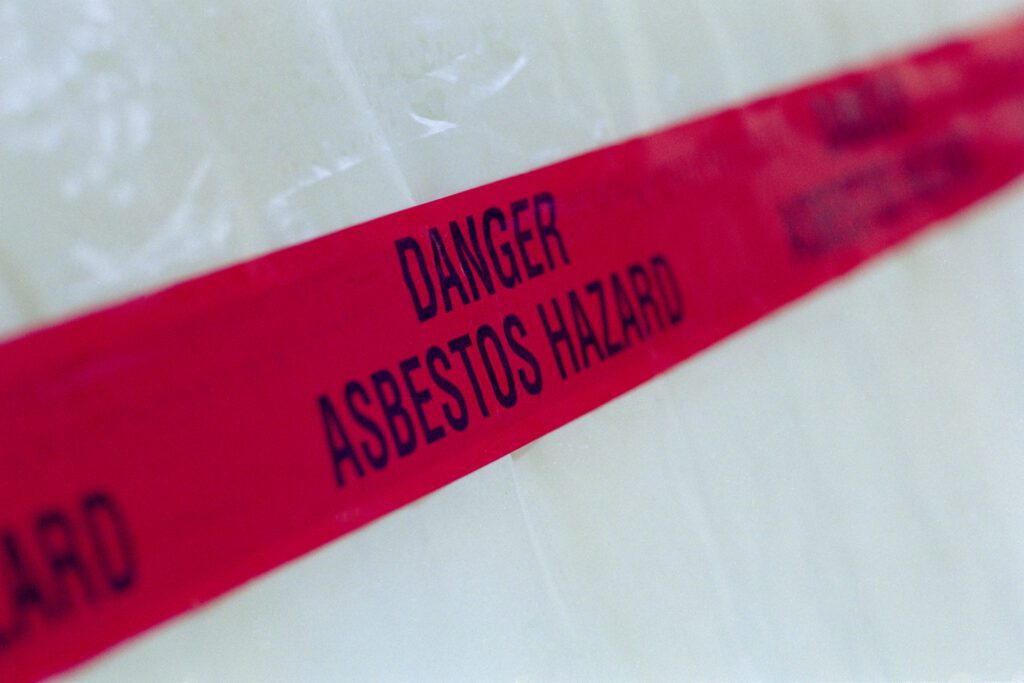
Asbestos consists of highly durable and heat-resistant fibers. Asbestos is often safe until disturbed, where prolonged exposure can trigger severe diseases, such as asbestosis or lung scarring, mesothelioma, and lung cancer. Due to its high fire resistance and lightweight nature, asbestos was popular in construction materials until the mid-1980s. Therefore, most older NYC buildings have asbestos in floor tiles, roofs, and insulation systems. You can also find it in exterior windowsills, caulking, and sometimes the plaster. If you suspect the presence of asbestos in your home, however small, read on to learn more about asbestos testing and what the test involves as we discuss what to do if you find it in your apartment. Requirements of NYC for Asbestos Testing In New York City, you’ll need asbestos testing before performing construction works such as tearing down a wall, and here’s why. Asbestos materials can be non-friable or friable. Friable asbestos, such as insulation, can easily crumble due to its brittle nature. Such materials readily release tiny asbestos particles in the air when crushed. Non-friable asbestos materials are tougher and thicker, so the asbestos rarely becomes airborne. Whichever the case, demolition works like removing ceilings, walls, or floors, removing roofing membranes, drilling, and cutting often release much dust, increasing the risk of asbestos inhalation. Based on the NYC Buildings Bulletin 2009-031, the only buildings not requiring asbestos tests are those constructed after 1st April 1987. If built before this date, an asbestos survey is necessary, even for minor renovations, remodeling, and repairs. An asbestos inspection or survey helps to determine the condition, friability, quantity, and location of all types of asbestos materials. An accredited and certified asbestos inspector licensed by the state and NYC will collect samples of the materials you intend to disturb during the demolition, remodeling, or renovation project. When Do You Need an Asbestos Test or Survey? Suppose you live in an older home or building where you suspect asbestos in some areas. In that case, we advise you to schedule an asbestos test or inspection, especially if the loose material disintegrates when touched. For instance, some homes have old insulation in the attic that looks like the pipes have a cloth wrapping. You should also perform a survey if: You plan to remodel or demolish part of your home You or your loved ones can easily find or come into contact with disintegrating or old insulation You suspect and would like to confirm whether your home has asbestos According to the New York City Local Law 76/85, a survey is mandatory before construction work, even if the property owner told you there’s no asbestos. Before starting any renovation, maintenance, or repair project, contact your local NYC building department to determine the necessary steps. Each jurisdiction has different procedures, and you’ll require a work permit from the NYC Department of Buildings (DOB). A certified Asbestos Investigator will handle the entire process, from inspection to sample collection. Sample Collection The guidelines outlined by the Asbestos Hazard Emergency Response Act and the Environmental Protection Agency require the investigator to collect at least one sample for every miscellaneous material such as: Siding and roofing materials Vapor barriers Transite or cementitious board Insulation boards Shingles Coatings Flashing Non-wood or non-metallic roof decking Felts Galbestos [https://unsplash.com/photos/0OZt4hzVUAY] The surveyor will also collect samples from: Ceiling tiles Chalkboards Cove base Vermiculite insulation Debris and dust Floor leveler compound Floor tile Vibration isolators Sealants, seals, and gaskets, including condensate control Transite or cementitious pipe or boards Caulks Drywall Electrical wire insulation Grout Terrazzo Linoleum or sheet flooring Textured paint Joint compound Finish plasters Thermal system insulation Fitting and piping insulations Acoustical plaster Mortar or cement used for boilers They should also collect three or more samples for materials like spray-on fireproofing. The number of samples depends on the surface area you intend to disturb and the materials used. The samples will go to a certified lab for thorough analysis, and the experts will receive the findings after completion. The investigator will fill out and sign an Asbestos Control Program (ACP-5) form if tests find no friable asbestos-containing materials. This form explains the absence of friable and non-friable asbestos or whether the friable asbestos is below 25 linear feet or 10 square feet. The investigator will then file the ACP5 form electronically with the New York City Department of Environmental Protection (DEP) and DOB for you to get a permit for the demolition or remodeling. Steps to Take if You Find Asbestos in Your Apartment Although asbestos is toxic or harmful, you don’t have to panic if the tests show its presence in your home. If you live in a rented apartment, your property manager or landlord will inform you of any asbestos found in the samples. If asbestos removal or abatement of the disturbed or damaged materials is necessary, the property manager will coordinate with you to schedule an appropriate date. For minor abatements, typically less than 25 linear feet or 10 square feet, you can remain in your apartment but ensure you keep away from the work area. You’ll have to temporarily vacate for larger areas exceeding 25 linear feet or 10 square feet until the work completes. You can liaise with your property manager and New York City Housing Authority’s (NYCHA) relocation staff to find temporary accommodations and cover the extra costs like moving and packing services. What to Do as An NYC Homeowner If the samples from your home have friable asbestos, you must file an ACP-7 form with the NYC DEP to declare you have a friable asbestos project. Anyone can submit this form, not just the surveyor, and you don’t have to file it with the DOB once you submit it to the DEP, unlike the ACP-5. After filing, you can begin an asbestos abatement project to eliminate affected materials before the planned renovation or construction works. Only a licensed contractor should remove and dispose of the asbestos since they have the appropriate tools, such as an asbestos air monitor.
How to Identify Asbestos in Your Home
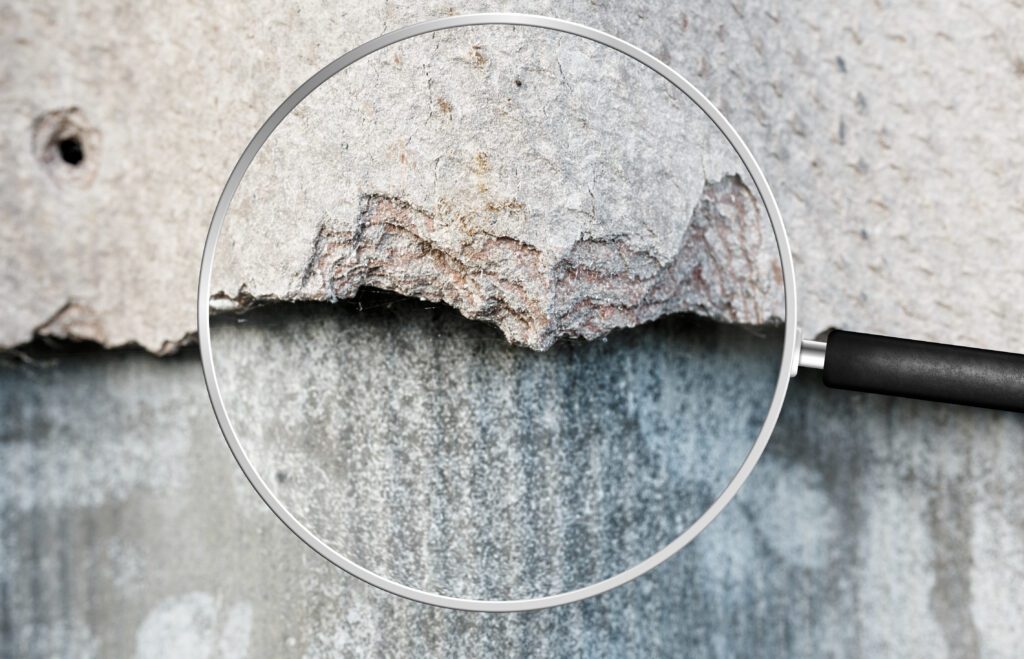
Asbestos is a mineral found naturally in certain types of rock worldwide. From the beginning of the 1940s to the 1970s, asbestos was widely used in manufacturing products, particularly building materials. This was because of its; Fire resistance Durability Reasonably low price Sadly, it was later discovered that exposure to asbestos fibers presents severe risks to respiratory health. Exposure to asbestos fibers can also lead to other health complications; asbestos Lung cancer Non-cancerous lung disease There is no cure for these illnesses, which all result in death. Places You Can Find Asbestos in Your Home? The United States outlawed spray-on asbestos and several other uses in the late 1970s, which significantly reduced the use of asbestos. However, asbestos is still present in some older houses. In such homes, asbestos may be present in various construction materials like paint, floor tiles, and insulation. Furthermore, before the 1980s, many American homes and public buildings, including schools and government housing, contained asbestos in the following materials: Some vinyl floor tiles Asbestos insulation around steam lines Cement asbestos board siding/under sheeting Asbestos roofing felt for shingles textured paintestos-containing vermiculite insulation Vinyl floor tiles Although many residential applications for asbestos are no longer allowed, it is still permitted in the US for over a handful of other applications. Signs Your Home Might Have Asbestos It is difficult to detect asbestos, which can often hide in plain view inside your house. Asbestos can appear as green, brown, or blue fluffy fibers. However, tiny fragments can also be present in materials such as cement or plastic, making them difficult to identify by yourself. Asbestos is hazardous when disturbed, so you should never dig around to look for it. While you can gather samples for testing, it is much better if an asbestos expert handles the task. Here are a few signs your house might contain asbestos: It has been around since the early 1980s Has corrugated roofing It has an older cement water tank It contains vinyl flooring or millboard included between 1952 and 1982 Has vermiculite insulation Have walls or other interior surfaces made of cement sheets Everyday Asbestos Exposure at Home The following are some of the common ways Asbestos exposure can occur at home ways: DIY home improvements, such as attic remodeling Replacing a worn-out pipeline. Drilling holes through drywall Vinyl floor tile removal Cutting Insulation on Pipes Removal of popcorn ceiling When to Carry Out Asbestos Testing for Your Home [https://pixabay.com/photos/sign-caution-asbestos-spray-paint-3789310/] In the 20th century, constructors mainly used asbestos in building materials and home insulation, and it’s easy to see why. Asbestos is durable and can resist heat, corrosion, and electricity. However, over the years, studies have found asbestos to be highly toxic, which has led to its ban. Statistics show that asbestos-related diseases causes 255,000 deaths annually. These illnesses include: Stomach tumors Asbestosis Stroke Pleural plaques Most homeowners might never need to have their houses tested for asbestos. Simply having asbestos in your house is not dangerous, as asbestos fibers are only a health hazard when inhaled. However, you should hire an expert to conduct an asbestos test if you; Intend to do construction work Observe damage to some of the drywall, siding, or piping Plan to remodel Have other concerns. How Asbestos Testing Works The length of the inspection procedure will depend on how big your house is. It may take hours or some days. The asbestos expert will do the following while inspecting your home; Turn off the heating and cooling systems to avoid the dispersal of any particles. Cover the surface beneath the test area with a solution of water and soap to minimize the discharge of fibers. Take tiny bits of potentially hazardous material. The aim is to disturb it as least as possible. Place the contaminated material into a secured container for shipping Clean the inspection area and throw away any remaining materials Gather any loose materials or fibers, not in the covered area with a wet cloth Submit the sample material to an accredited laboratory for testing. What to Do If Your Home Has Asbestos Following the discovery of asbestos in your home, your next course of action will depend on the following; The type of asbestos Its location Whether friable or not Friable asbestos could readily disintegrate, releasing hazardous airborne particles. However, some materials containing asbestos are non-friable and are still secure if they’re in excellent shape. Your contracted asbestos expert may then decide to remove the asbestos or repair the affected areas with an encapsulant or covering, depending on the state of the asbestos. You will need to leave the house until an air test shows clear of all residue should the expert find it necessary to remove the asbestos. Asbestos removal is typically more expensive than a repair, but if you first repair, asbestos removal may be more challenging and costly in the future. 1. Enscapulation (sealing) Encapsulation is the application of a sealant to the material, which either coats the asbestos material or bonds the asbestos fibers to prevent fiber release. This method is efficient for furnace, pipe, and boiler insulation. 2. Covering(enclosure) Covering entails wrapping a jacket or protective wrap around the asbestos-containing substance to prevent fiber release. Never try to remove asbestos yourself from your house, as improper asbestos handling may create additional problems. You should always engage a specialist. Asbestos removal may seem expensive, but it is worth it. The average cost of asbestos removal ranges from $1,100 to $2,800. Guidelines for A Safe Asbestos Removal Obtain written confirmation from the contractor that they complied with all applicable asbestos removal and disposal laws Ensure to engage only contractors granted state authorization to do asbestos abatement work. Request references and recently completed comparable projects. Request a disposal manifest before settling the final invoice to confirm that the contractor will dispose of the material in a landfill authorized to accept asbestos. Find out if the company has ever had safety violations. Contact the local air pollution control board, the organization in charge of worker safety, and the Better Business Bureau. Confirm the contractor
How to Find Out if You Have Been Exposed to Asbestos
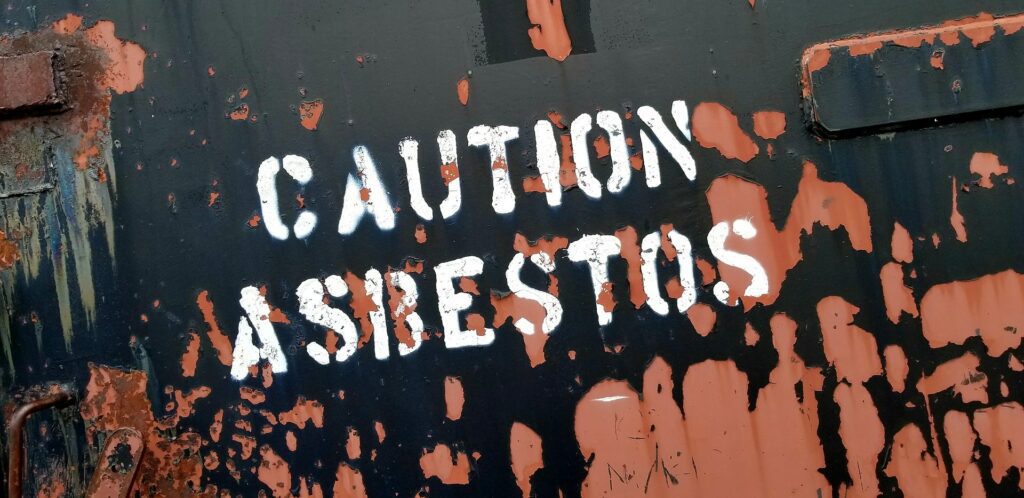
Asbestos refers to six naturally occurring minerals that exist as bundles of fiber that can separate into thin threads. Asbestos fibers don’t conduct electricity and are resistant to fire, chemicals, and heat. These properties make asbestos appropriate for multiple industries such as roofing, insulation, and flooring. However, asbestos got banned for use in buildings due to the health risks. When left undisturbed, asbestos is harmless. But, if the material gets damaged, it can produce fibers in the form of fine dust. What Makes Asbestos Dangerous? The danger in asbestos comes from the microscopic-thin fibers. Since they are tiny, they can remain suspended in the air for days after the initial disturbance. When you breathe them in, they attach to your lung tissues, causing scarring, inflammation, and serious illnesses. Asbestos exposure can increase the risk of getting: Mesothelioma; cancer of the lining of the stomach and lung cavity Lung cancer Asbestosis, which is permanent scarring of the lung tissue Cancer of the throat, kidney, and gastrintestinal tract Scarring of the lung lining and accumulation of fluid around the lungs Which Products Have Asbestos? Asbestos became popular during World War II. Some building materials with asbestos are such as: Asbestos roofing, siding, and cement shingles Floors and walls near woodburning stoves may have asbestos millboard, paper, or cement sheets for protection Blown-in attic insulation Furnace, duct, and pipe insulation Basement boilers and pipes Joint and patching compounds Floor tiles and adhesives Artificial embers and ashes in gas-powered fireplaces Fireproof products and fire-resistant materials suc h as gloves, curtains, blankets, table pads, and old stovetops Gardening products and attic insulation with vermiculite Gaskets, brake pads and linings, and clutch facings in vehicles Some adhesives, coatings, textured paints, and plastics Is Asbestos Use in Building Materials Legal? The United States passed regulations that limited asbestos use in the late ’70s. These regulations ensure: There’s no use of asbestos in places where it could mix with air, such as gas fireplaces If there’s the use of asbestos materials, regular inspections should ensure the material remains undamaged and intact There are guidelines to ensure asbestos particles don’t escape into the air during use When Does Asbestos Become Dangerous? All types or forms of asbestos fibers can be dangerous. There’s no quick way to identify asbestos in the air you’re breathing. You can’t tell if it’s harming your lungs as it doesn’t make you sneeze, cough, or irritate your throat and skin. Asbestos fibers often mix with air when you disturb, damage, or unsafely remove asbestos materials. The fibers are tiny, so it’s impossible to taste, see or feel them. There’s a professional way to measure asbestos fibers suspended in the air. The measurements are in fibers per cubic centimeter of air (f/cc) units. According to health professionals, clean air should have an asbestos level of 0.01 f/cc. If exposed to asbestos, the harmful effects will depend on several factors, including: The intensity or how much asbestos is present The duration of exposure The intake method, whether it was through eating, drinking, or breathing the fibers Genetic mutations that make some people more likely to develop diseases Individual risk factors such as pre-existing lung diseases and smoking The material in use, asbestos, is more harmful when released into the air, like during sawing, than when bonded within a product like tiles It can also depend on personal characteristics such as your age, gender, and health status. How Much Asbestos Is Harmful? Any amount of asbestos is unsafe. All materials that have more than 1% of asbestos minerals have asbestos. High concentrations are more likely to cause asbestos-related diseases. It’s possible to get mesothelioma even from the dust that remains on clothes if someone around you works using asbestos. How Long Does It Take to Develop Asbestos-related Diseases? Asbestos diseases usually progress after a latency period. This refers to the duration between when the asbestos enters your lungs to when you start experiencing symptoms. The latency period can be anywhere between ten and forty years. Although not every exposed person develops an asbestos disease, the risk is very high. All asbestos-related illnesses become complicated, if not impossible, to cure. It’s therefore essential to prevent asbestos fibers from entering your lungs. Symptoms of Asbestos-related Diseases Since asbestos-related diseases have a latency period, you may not have any immediate symptoms. Some warning signs and symptoms can be: Shortness of breath Extreme fatigue, especially with other symptoms like unexplained weight loss and coughing Wheezing, persistent dry cough, or changing cough patterns Bloodstains in the sputum Sudden weight loss and loss of appetite Swelling in the face or neck If you notice one or multiple of these symptoms, it’s best to seek medical assistance right away. Since other medical conditions can have similar symptoms, medical tests will help you eliminate other possibilities. When caught in the early stages, asbestos-related illnesses can be treatable. Are All Asbestos Products Dangerous? Asbestos fibers are harmless unless they mix with air. Currently, building materials and products with asbestos bond it within the product. When used appropriately and in good condition, such products have minimal health risks. However, building demolition, damaging, sanding, or tearing the material can release the microscopic fibers. What if the Asbestos Material Has Damages? If you notice any damages to the material, get in touch with a professional company to sample and test the material. If asbestos is present, you’ll need to repair or remove the fabric to prevent releasing the fibers. Avoid handling the material yourself, but hire an asbestos professional to repair or remove it. Mishandling the material is riskier than leaving it as you found it. What Should I Do if I Notice Asbestos Material in My Home? It isn’t easy to ascertain that your home has asbestos. However, home constructions between the 1940s and 1970s are more likely to have materials with asbestos. If you notice asbestos materials in your home, the best move is to leave them as-is. Regardless of the amount and location, allow professionals such
Dangers of Asbestos in NYC apartment
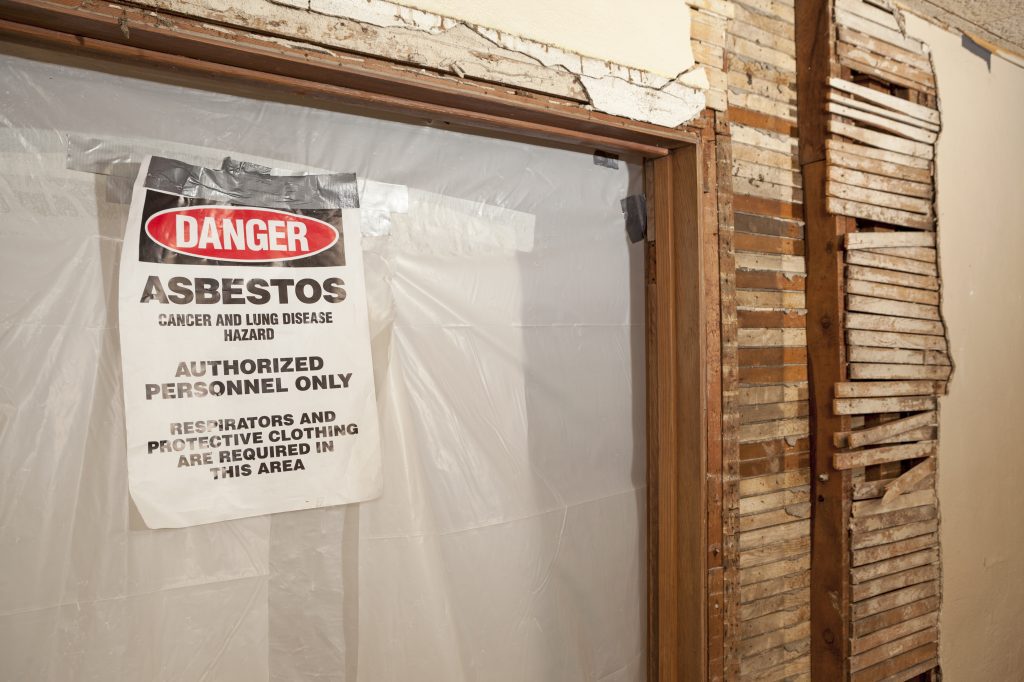
Even though asbestos has been on the public health radar for decades now, it is still legal to use in many manufacturing processes in the U.S. today. The federal government has regulated how it can be utilized since the decade of the 1970’s. While it may not be processed and sourced in America any longer, manufacturers still work it into such common apartment construction materials as vinyl floors and cement pipes. We will look at the history and dangers of asbestos in New York City apartments in greater detail in this article. If you suspect that your particular apartment suffers from unsafe asbestos exposure, you should call a professional NYC contractor or the NYC Department asbestos investigator. The Rise and Fall of Asbestos in New York It is a sad comment that the history of the Big Apple follows the fortunes of the mineral asbestos so well. While there were a number of asbestos companies NYC, the company that popularized asbestos was a New York City firm called the H.W. Johns Manufacturing Company. Established in 1958, it quickly became successful for employing asbestos in fabricating construction materials that were ideally suited for building and insulation because of the fire-resistant nature of asbestos. The profits in this industry were built on the ruined health of countless residents and workers of New York City. Today the city enforces stringent NYC asbestos rules. First rising to widespread fame as a key component of navy ships in the Second World War as the New York City shipyards cranked out warships, asbestos helped to both fireproof and insulate these American vessels. The state factories continued to mass produce asbestos products in the economic boom that followed World War II. Factories throughout New York state and city ensured this highly toxic mineral’s demand remained high. Corporate moguls made fortunes covering up the awful effects on health from exposure to the poison metal asbestos. Sadly this was long before the days of NYC asbestos regulations.Dr. Irving Selikoff gained his place in history for unveiling the dangers of asbestos to the public. In the 1960’s while he worked at Mount Sinai Medical Center of NYC, he researched and released his discoveries on diseases that stemmed from asbestos exposure. Thanks to his earth-shaking revelations, the EPA enacted a range of national safety rules and regulations on the use of asbestos, though they did not outlaw its use. It fell to the successor company of H.W. Johns Manufacturing, Johns Manville, to establish the first asbestos settlement trust in America in 1988. This precedent established the first of countless trusts that other New York companies have since modeled. Dangers of Asbestos in NYC The dangers to people from asbestos stem from the molecular makeup of its structure. Its minute fibers highly resist heat, fire, and acid. These insulating properties that come from Asbestos make it useful for pipe and building insulation, apartment building wall fireproofing, and even drapes and heavy curtains. Beneath New York City’s Manhattan lies a vast network of steam pipes that spans miles and dates back to over a century. The piping thermal insulation still has asbestos in it. Many other household items and structures contain asbestos today in NYC, including: Vinyl tiles in flooring Wall and attic insulation Roof shingles Situations Causing Asbestos Release In theory asbestos only turns dangerous when it becomes released or airborne. Unfortunately, there are all too many ways that this can happen, both outside of and inside your apartment. As one example, a steam pipe explosion a few years ago released asbestos into the air and potentially contaminated apartment buildings nearby. More common means of releasing asbestos include the following: Demolition of buildings Remodeling of apartment buildings and houses Repairs and maintenance in an apartment building Fire or Water Damage Asbestos release is particularly prominent and perilous when materials that it makes up get destroyed. This causes asbestos to be airborne, as the damaged asbestos items will emit the dreaded asbestos fibers into the air. Blown ceilings that contain the material will release these fibers when workers patch or drill them. Deteriorating asbestos insulation (surrounding furnaces, boilers, and pipes) emits asbestos dust. Ceilings that are not well-maintained can release asbestos with ceiling fan produced air movement. Drapes that contain asbestos spread the dust when you merely open or close them. There are even asbestos transite pipes. They move water into houses and apartments. The transite contains asbestos that deteriorates with time. These fibers from asbestos can easily pass into the water traveling through the pipes and become toxic particles in drinking water in New York City apartments this way. When Asbestos Becomes A Serious Health Hazard It is continuous exposure to such asbestos fiber particles that creates the risk of cancer. No one anymore even disputes the established claims that long-lasting, continuous exposure to asbestos leads to pharyngeal cancer, lung cancer, ovarian cancer, mesothelioma, and asbestosis (physical scars on the lungs), according to Dr. Philip Landrigan. Dr. Landrigan is the occupational physician and expert on asbestos health effects at the Icahn School of Medicine in Mount Sinai Medical Center in New York and Boston College’s Global Public Health Program Director. For those who smoke and are exposed to asbestos the danger is far greater. Dr. Landrigan has warned that smoking greatly multiplies the chances of getting lung cancer after a person has become exposed to asbestos. Signs to Recognize that Asbestos Has Been Released Unfortunately it is not always easy to realize that asbestos has been released in your apartment unit or apartment block building. It can be painfully obvious in the cases of 9/11. As he World Trade Center imploded, literally hundreds of tons in asbestos permeated the air of Manhattan. It is highly likely that not only the first responders but also residents of apartment buildings nearby and individuals assisting with the cleanup efforts breathed it in. It will take many grim years before the longer-term effects of such lethally high doses of exposure to the asbestos fibers become
